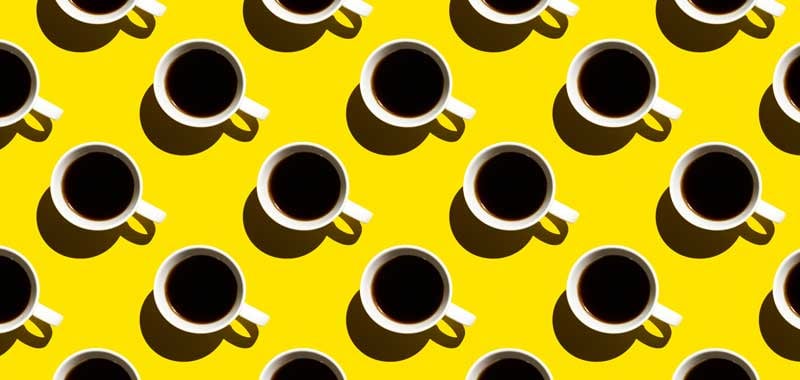A lot is going to change in the coming years in terms of laws and regulations for sustainability. And this is especially true for the food sector. This could also has consequences for your organization. For example, how do you best deal with packaging, sustainability requirements and waste? In this blog, we would like to offer you a helping hand.
A good example of the new rules and obligations is the European Corporate Sustainability Reporting Directive (de CSRD), which came into effect in early January. According to this European directive, more and more (large) companies are required to report on their impact on people and the environment.
Another directive is the SUP. With this Single-use plastic directive, the Dutch government wants to reduce plastic litter. It concerns the ten plastic products most commonly found on European beaches. One measure is to ban the sale - or give away for free - of certain disposable plastic products such as plastic coffee cups in the office.

No escape
In itself it is good that this legislation is in place, because it sets a certain movement in motion and there will be more focus and emphasis on sustainability. Moreover, as a company there is no escape; whether you like it or not, you have to comply with the rules. It affects you directly or through your suppliers/customers. Downside: legislation is not appropriate in all situations and sometimes an integral approach is lacking.
The purpose of the new rules is to reduce the impact on our environment and climate; not necessarily to ban certain packaging. Indeed, there is a chance that the alternative to the banned packaging material could be even more harmful to our planet. Even for policymakers, then, the end should be the focus, not the means to that end.
So it is now up to the business community to pick up the gauntlet, with the right amount of pressure and coercion from legislation and regulations. Our advice: become a leader with your company, prepare well, and immerse yourself in the matter.
The CSRD
To report for the CSRD on things like carbon emissions, social capital and the impact you have as a company on biodiversity, you need insight. But a lot of companies still have to work on that or have yet to take steps in that direction. Because even though it is now 2023, many companies are still far from having these figures in order.
Even smaller companies that are not yet required to report will be affected by this new directive. After all, the big companies you currently work with or supply to will come knocking on your door. After all, what you as a small organization do with ingredients or packaging materials also affects their business. So this legislation affects the entire chain.
SUP directive
The SUP directive has been implemented in several stages in the Netherlands. This means that in any case, you must address your coffee cups wherever you are. In fact, that rule is the same for everyone. A more specific example is portion packaging. There will even be a ban on certain portion packs. The downside, however, is that this could create more waste, since portion packs tend to create less food waste. So this directive addresses only one issue and does not take into account any downsides, which is unfortunate.
The SUP directive should ensure that disposables should move more toward "reusable," and that means toward return logistics of packaging. An interesting example is the "out of home" market. This includes so-called take-home items such as sandwich wrappers at the gas station. These are not banned (yet) but are discouraged, so the producer/seller can offer a reusable alternative.
Gadgets
In France, this rule has been in place for some time, and it is being handled very inventively. The packaging of a well-known fast-food chain - a kind of Tupperware containers with fun prints - is so popular there that they are even stolen. And the milkshake cups of another fast-food chain have also become real gadgets. So this is how recycling becomes attractive to consumers.
In the design phase, it is very important to think carefully about the raw material you want to use for your packaging, and the impact on the environment. Is it a disposable yes or no? And what, if any, will be your alternative? Will you go with glass, plastic or will you take a biobased material?

More innovative
Because of changing laws and regulations, companies have to become much more innovative. After all, something is imposed on you by the government; you are no longer at the helm yourself so you have to get to work. Make sure you have the right insights and steering mechanisms. If you see the new guidelines as an opportunity to create distinctiveness instead of a constraint, the whole thing will take on a completely different hue. Here it is important that eco and euro go hand in hand.
Things must be tackled integrally and fully, at points that have a positive impact on companies. For earning capacity and for the environment. Not the method, but the objective is central here: less consumption of raw materials or circular consumption of raw materials.
Learn more: white paper for the food sector
All of these guidelines aim to move together toward circularity. This is not an easy task. Thus, within the food sector we see a number of trends and developments that we follow closely and that are going to help us move together towards a circular food sector. Want to know more about these developments and what steps we need to take together? Download our whitepaper 'Towards a circular food sector' now.
Stay informed? Follow us on LinkedIn.






.jpg?upscale=true&width=1600&name=wetgeving-food-header---kopie-(3).jpg)
.jpg?upscale=true&width=768&name=wetgeving-food-header---kopie-(3).jpg)


